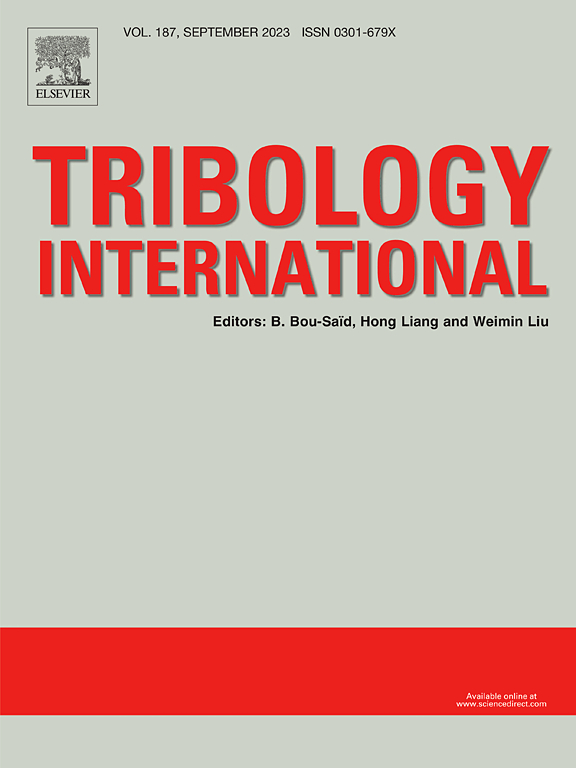Improvement of measurement accuracy for oil film distributions on piston skirts by blocking diffuse fluorescence with a hole in a cover
IF 6.1
1区 工程技术
Q1 ENGINEERING, MECHANICAL
引用次数: 0
Abstract
The induced fluorescence method is one of the most promising techniques for evaluating oil film distributions on a piston skirt. However, preliminary tests revealed that its measurement accuracy is insufficient.
This study aims to clarify the influence of diffuse light from surrounding regions of a measurement point, assuming it to be a potential cause of measurement accuracy deterioration, and to suggest a way to improve the measurement accuracy of this method.
Oil film distributions were measured using a visualized engine with a whole sapphire glass cylinder. To evaluate the influence of diffuse light, a cover with a hole was attached to the outer surface of the cylinder and fluorescence intensity with and without the cover was compared during both calibration and engine operation.
The fluorescence intensity with the cover was lower than without it, indicating that diffuse light from outside the measurement point contributes to measurement deterioration. Furthermore, the result demonstrated that the influence of diffuse light can be corrected accurately using the correlation between the fluorescence intensity with and without the cover.
用盖孔阻挡漫射荧光提高活塞裙边油膜分布测量精度
诱导荧光法是评价活塞裙部油膜分布最有前途的技术之一。然而,初步测试表明其测量精度不足。本研究旨在阐明测点周围区域漫射光的影响,假设它是测量精度下降的潜在原因,并提出提高该方法测量精度的方法。油膜分布测量使用可视化发动机与整个蓝宝石玻璃缸。为了评估漫射光的影响,在气缸的外表面附着一个带孔的盖子,并在校准和发动机运行期间比较有和没有盖子的荧光强度。有盖的荧光强度比没有盖的荧光强度低,说明来自测点外的漫射光导致了测量劣化。此外,结果表明,利用覆盖前后荧光强度的相关性可以准确地校正漫射光的影响。
本文章由计算机程序翻译,如有差异,请以英文原文为准。
求助全文
约1分钟内获得全文
求助全文
来源期刊

Tribology International
工程技术-工程:机械
CiteScore
10.10
自引率
16.10%
发文量
627
审稿时长
35 days
期刊介绍:
Tribology is the science of rubbing surfaces and contributes to every facet of our everyday life, from live cell friction to engine lubrication and seismology. As such tribology is truly multidisciplinary and this extraordinary breadth of scientific interest is reflected in the scope of Tribology International.
Tribology International seeks to publish original research papers of the highest scientific quality to provide an archival resource for scientists from all backgrounds. Written contributions are invited reporting experimental and modelling studies both in established areas of tribology and emerging fields. Scientific topics include the physics or chemistry of tribo-surfaces, bio-tribology, surface engineering and materials, contact mechanics, nano-tribology, lubricants and hydrodynamic lubrication.
 求助内容:
求助内容: 应助结果提醒方式:
应助结果提醒方式:


